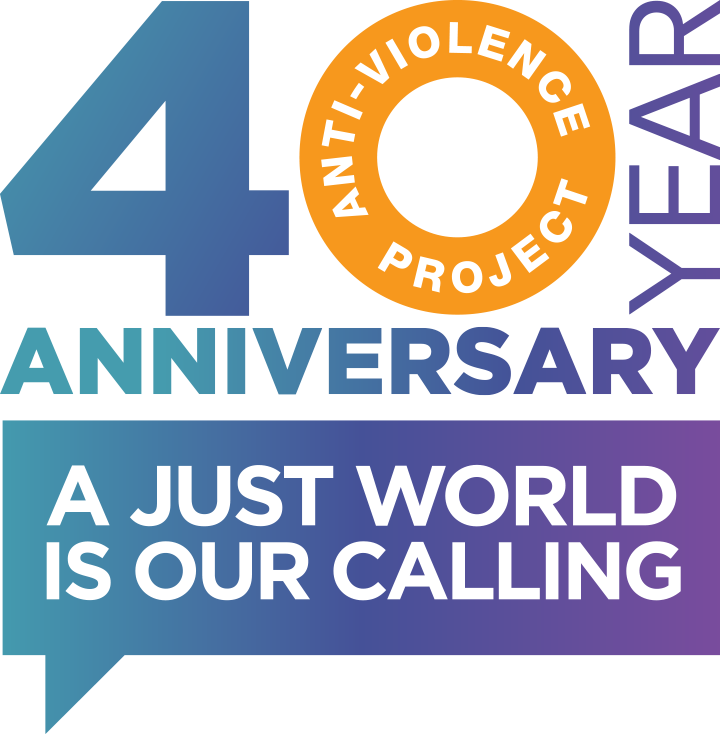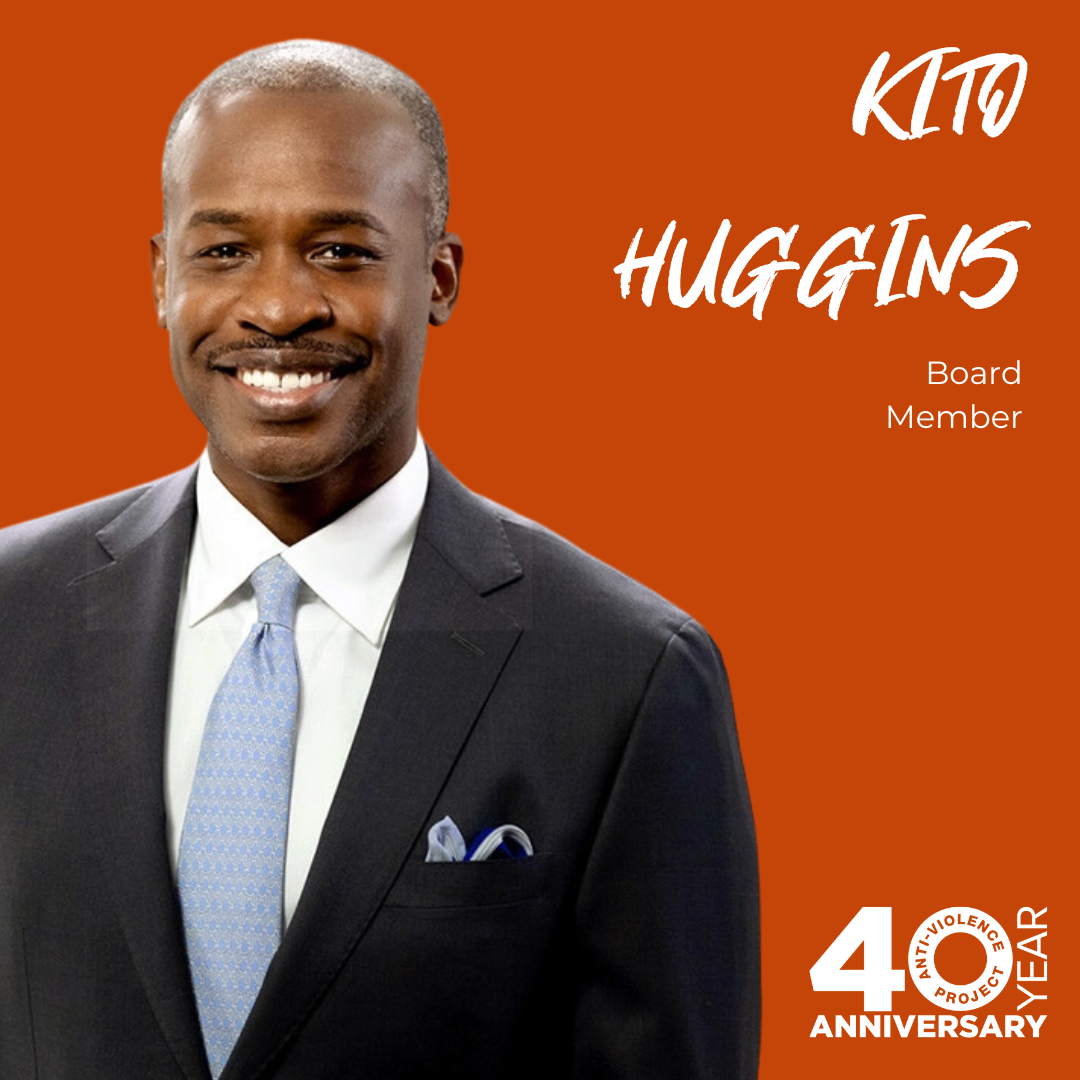
Carla Smith has spent over twenty-five years working on ending violence. Currently, Carla is the Deputy Chief Executive Officer at Urban Resource Institute (URI), the largest provider of domestic violence shelter services in the United States. During her time at AVP, she worked initially managing grants and then after her first year as Director of Finance and Administration until 2015.
We spoke about trauma-informed care, consulting work, and VAWA.
How did you first come into contact with AVP?
I was contacted by one of their board members, Ken. Ken used to do a lot of work in the finance industry. At the time, I had done some consulting work around grants management with an organization that Ken had been working with, so I was connected to Sharon Stapel, who was the Executive Director, about a possible consulting position to help the organization put together some policies and procedures related to grants management. The position would help them manage various types of funding that they were getting from the government. That was my introduction. I had heard of AVP before, of course, but hadn’t had a full introduction to them until that point.
What was the thing about AVP that made you want to work with them?
I had spent a year doing consulting work with them. I do a lot of onsite consulting. I’ve been committed to the anti-violence movement for an extended period of time. I’m a member of the community. I was working in anti-violence work in Westchester at that point, overseeing residential facilities. So while I had a finance background, I was more on the program side, but I really liked the environment at AVP. I felt at home there in a lot of ways that I hadn’t felt in other organizations at that time.
I really liked the staff there and the leadership team. It was like a family environment. It was a small organization. I think at that time, there were probably less than 30 people there when I first started consulting. And then an opportunity came up, a job opportunity to oversee their finance and administration. I had a good relationship with Sharon, so she encouraged me to apply and I did. I think everybody in the organization interviewed me in the conference room. I remember walking into the conference room, and there were 30 people around the table.
It was a massive interview process. And so I went through that and then I went through an interview with some of the board members, but it was a good experience. I really liked the fact that people were really committed to getting access to services for the community and quality services and that they had this national technical assistance arm. Even though I was in finance in the organization, [because of] my program background, I felt close enough to really know what was going on because the organization was small. It wasn’t large, which would’ve kept me out of this direct service type of work. I really enjoyed hearing about the impact that the organization was having.
What was your experience like working at AVP?
Yeah, it was definitely a different time. I think we were brave. I think we were out there a lot. I think we were in the community quite a bit. There was so much stuff happening and Sharon was a proponent of really just making that known and visible and us marching at different points based on what was happening in the community. It was a challenging time. There was a lot of violence, but I also think there was a positioning on a national level that allowed us to get things out there.
I don’t necessarily know that we always thought about the implications of doing that stuff as well, just from a trauma perspective, what does that necessarily mean? How does that impact other people? We also tried to make sure that we were taking care of each other. It was difficult to work, to see, as it is in the anti-violence movement, to be exposed to levels of trauma and violence. And really while we were not the same type of direct service provider that I am [working at] right now in terms of the housing arena, we were doing direct services.
I think there wasn’t that buzzword language around trauma-informed care that there is now, but we were definitely aware of the impact of the work on us as individuals, on our clients, and really just trying to be mindful of that.
But it was definitely a time where you would hear about hate violence quite a bit, more so than I’ve heard about it lately. That doesn’t mean it doesn’t exist. It seemed like it was happening every day or every week you were hearing about something. It was a challenging time.
Are there any moments from your time at AVP that stand out to you?
I’d been in New York for a while, but this was the first time I actually marched in the [Pride] parade, and I was able to be part of that community and what that felt like. I think there were lots of actions that we took around certain incidents of hate violence that still stand with me. Just remembering those things that were happening back then.
I do remember Sharon being at the White House [for] the signing of the Violence Against Women Act (VAWA). The re-signing of VAWA when LGBT-identified individuals were included in VAWA. I remember that in particular happening back then and her role in that work. And I remember the team, I really remember how committed people were to the work. I definitely felt like a family environment, and we felt bigger than 30. I will say that. It felt like a definite bigger-than-30 presence.
Why do you think organizations like AVP or other anti-violence organizations are necessary today?
I think we know that every organization has a mission and a vision. And so I think it’s obvious that there is a lot of work to do in the anti-violence movement. We continue to see increasing rates of intimate partner violence among many different populations. You’re hearing about deaths. You’re hearing about hate violence, sexual violence, all those things that we need to continue to provide services to combat. We’re also doing abusive partner work. This is not something that the movement did years ago. It was unheard of to want to work with abusive partners. People felt as if you were taking away something from victims. And to me, it’s always about, okay, well, you can’t solve this problem if you don’t work with people who also cause harm, who have been harmed to some degree.
And so without making excuses for behavior, but really wanting this to work, can’t be done by one organization. It has to be done by many organizations working together. We’re excited about continued work with AVP. At one point, we had LaLa come in – LaLa [Zannell] used to be the trainer there– come in and do some conversations with us to really talk about how we do this stuff together. I think it’s important that different types of organizations are available for people to have choices, where they want to go for services because some people feel more comfortable at one organization as opposed to another one.




